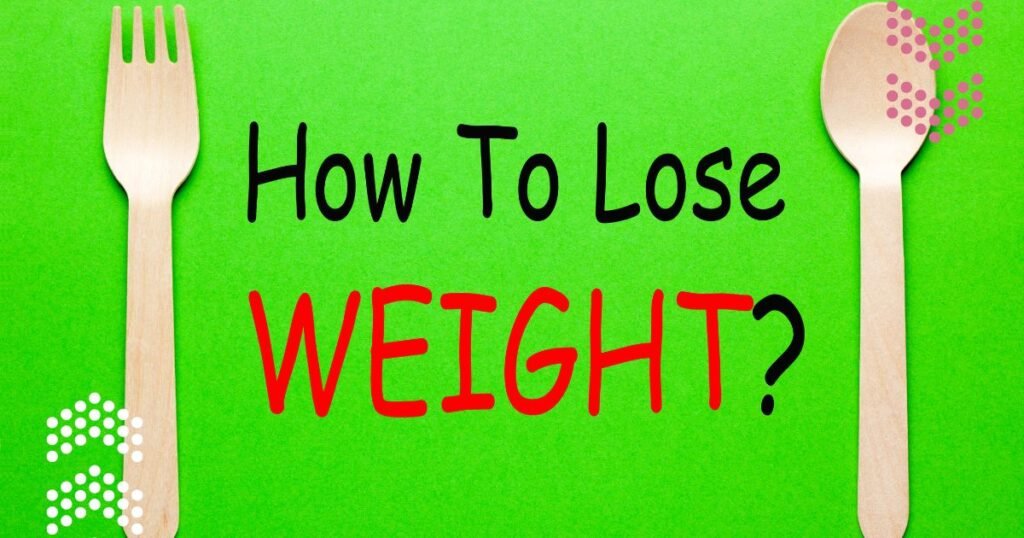The Science of Weight Loss for Women: Understanding Deficits
Weight loss can be complicated, especially for women who face unique biological, hormonal, and metabolic challenges. Understanding the science behind caloric deficits is crucial for a successful and sustainable weight loss journey. Women, in particular, must navigate issues like fluctuating hormones, slower metabolism, and changes in body composition over time.
A caloric deficit occurs when you consume fewer calories than your body needs to maintain its current weight. This forces the body to use stored fat for energy, leading to weight loss. However, the process is not always as straightforward for women due to these unique challenges, which makes it vital to approach weight loss from a holistic perspective.
Understanding the Concept of Caloric Deficits
What is a Caloric Deficit?
At its core, a caloric deficit is the difference between the calories your body needs to maintain its current weight and the calories you consume. If you eat fewer calories than you burn through daily activities, exercise, and normal bodily functions like digestion, you enter a caloric deficit. This forces the body to tap into its fat reserves to meet energy demands, leading to weight loss.
However, the way you achieve this deficit matters. It’s important to create a moderate and sustainable deficit, which will allow for consistent fat loss while maintaining muscle mass and overall health. Starvation diets or drastic reductions in calories are not only unsustainable but can cause long-term damage to your metabolism and health.
How Much of a Deficit is Healthy?
The goal for most women is to achieve a moderate caloric deficit of around 500 to 1,000 calories per day. This range typically results in a weight loss of 1 to 2 pounds per week, which is considered healthy and sustainable. Rapid weight loss from extreme caloric restriction can cause muscle loss, slow down your metabolism, and even lead to nutritional deficiencies.
Additionally, rapid weight loss can be particularly harmful to women, who may already be prone to conditions like osteoporosis, thyroid dysfunction, and hormonal imbalances. That’s why it’s important to take a balanced approach to weight loss, ensuring you’re still providing your body with the nutrients it needs to function optimally.
The Role of Macronutrients
When pursuing a caloric deficit, it’s not just about reducing calories—it’s also about eating the right kinds of calories. The macronutrient composition of your diet plays a critical role in how well you lose fat while maintaining muscle mass. For women, this balance is especially important due to the tendency to lose muscle mass as we age.
Protein, for instance, is vital for maintaining muscle mass, particularly during a caloric deficit. Women should aim for higher protein intake when trying to lose weight to prevent muscle loss, as muscle burns more calories than fat, even at rest. Carbohydrates and fats, while often feared in weight loss, are still necessary for providing energy and supporting bodily functions. The key is moderation and choosing the right kinds of fats and carbs.
How Women’s Bodies Burn Calories Differently
Metabolism in Women vs. Men
One of the most significant differences between men and women when it comes to weight loss is metabolism. Women naturally have less muscle mass compared to men, which means their resting metabolic rate (RMR) is generally lower. This means that women burn fewer calories at rest than men, making it more difficult to achieve a calorie deficit.
Additionally, women tend to store fat more easily due to evolutionary factors. While men often lose weight faster because they have more muscle mass, women must focus on preserving muscle while losing fat to ensure a healthy metabolism. This makes strength training an essential part of any weight loss plan for women.
Hormonal Influence on Caloric Burn
Hormones play a significant role in how women lose weight, making it a unique challenge compared to men. Estrogen and progesterone, the two primary hormones in women, fluctuate throughout the menstrual cycle, which can impact weight loss efforts. For example, many women experience increased hunger and cravings during certain phases of their menstrual cycle, making it harder to maintain a caloric deficit.
As women age, these hormonal fluctuations become even more pronounced. Menopause often leads to a decrease in estrogen levels, which can slow metabolism and cause increased fat storage, particularly around the abdomen. This change makes it even more important to focus on a balanced diet and consistent exercise to combat these hormonal shifts.
Age and Metabolism
As women age, their metabolism naturally slows down. This is largely due to the gradual loss of muscle mass, which begins in the 30s and accelerates in the 40s and 50s. Since muscle burns more calories than fat, a reduction in muscle mass means fewer calories are burned at rest.
Women over the age of 35 often find it harder to lose weight using the same methods that worked for them in their 20s. To overcome this, women must incorporate strength training into their fitness routines and adjust their caloric intake to reflect their changing metabolic needs. Additionally, staying mindful of nutritional needs as they age is critical to maintaining long-term health and wellness.
Creating a Sustainable Caloric Deficit
The Role of Nutrition
One of the most important aspects of maintaining a caloric deficit is nutrition. Achieving a deficit doesn’t mean you need to deprive yourself or cut out entire food groups. Instead, focus on nutrient-dense foods that provide essential vitamins and minerals without excessive calories.
For women, ensuring adequate intake of protein, healthy fats, and fiber-rich carbohydrates is essential. Protein helps preserve muscle mass during weight loss, while healthy fats support hormone balance and overall health. Fiber-rich foods like vegetables and whole grains promote satiety, helping you feel full while consuming fewer calories.
ShapioX Recipe Guide
ShapioX offers a wide range of recipes specifically designed to help women achieve a caloric deficit without sacrificing taste or nutrition. These recipes are created with the needs of women in mind, ensuring that you get all the necessary nutrients while maintaining your calorie goals. Whether you’re looking for protein-packed breakfasts or low-calorie dinners, ShapioX has recipes that can fit your lifestyle and preferences.
Tracking Calories Effectively
Tracking your calorie intake is crucial when trying to achieve a caloric deficit. Many women underestimate how much they’re eating, which can sabotage their weight loss efforts. Using tools like calorie-tracking apps, food journals, or ShapioX’s built-in calorie calculator can help you stay accountable and ensure you’re staying within your daily caloric limits.
The Importance of Exercise in a Deficit
How Exercise Supports a Deficit
While nutrition is the cornerstone of weight loss, exercise is an important complement. Exercise not only helps burn additional calories, but it also plays a key role in preserving muscle mass. When in a caloric deficit, your body may break down muscle for energy if you’re not engaging in regular strength training exercises.
For women, especially those over 35, incorporating both cardiovascular exercise and strength training into their routine can help increase caloric burn while maintaining muscle mass. This combination is crucial for long-term success and metabolic health.
Cardio vs. Strength Training for Women
While both cardiovascular exercise and strength training are important for women, they serve different purposes. Cardio helps burn calories and improve heart health, while strength training helps build and maintain muscle mass. Since muscle burns more calories at rest, strength training is an essential component of any weight loss plan for women.
NEAT (Non-Exercise Activity Thermogenesis)
Non-Exercise Activity Thermogenesis (NEAT) refers to the energy expended from daily activities that aren’t formal exercise, such as walking, cleaning, or even fidgeting. NEAT can make a significant contribution to your overall caloric burn, especially if you lead a relatively active lifestyle.
Incorporating more NEAT into your day—such as taking the stairs instead of the elevator, walking during lunch breaks, or standing while working—can help increase your caloric deficit without the need for structured workouts.
Common Challenges Women Face with Caloric Deficits
Hormonal Fluctuations
One of the biggest challenges women face when trying to maintain a caloric deficit is hormonal fluctuations. During certain phases of the menstrual cycle, many women experience increased hunger, cravings, and fatigue, which can make it difficult to stay on track.
Understanding how your cycle impacts your appetite and energy levels can help you plan ahead and make adjustments as needed. For example, during the luteal phase (the week before your period), you may need to slightly increase your caloric intake to accommodate increased hunger, but focus on nutrient-dense foods rather than high-calorie treats.
Emotional Eating and Stress
Stress and emotional eating can also derail your efforts to maintain a caloric deficit. Many women turn to food as a way to cope with stress, which can lead to overeating and weight gain. Finding healthier ways to manage stress, such as meditation, exercise, or journaling, can help you stay on track with your weight loss goals.
ShapioX Support System
At ShapioX, we understand that women face unique challenges when it comes to weight loss. That’s why we offer a range of support systems, including our women-only blogs, expert advice, and fitness coaching. These resources are designed to help women overcome the obstacles they face on their weight loss journey and achieve long-term success.
Avoiding the Pitfalls of Drastic Caloric Deficits
The Dangers of Extreme Calorie Restriction
Extreme calorie restriction is never the answer to long-term weight loss. While you may see rapid results initially, drastic caloric deficits can lead to muscle loss, nutritional deficiencies, and long-term metabolic damage. Women, in particular, are more prone to the negative effects of extreme dieting, including hormonal imbalances, thyroid issues, and bone loss.
Metabolic Adaptation
When your body is subjected to a prolonged caloric deficit, it can enter a state of metabolic adaptation. This means that your metabolism slows down in response to the lower calorie intake, making it harder to lose weight. This is why extreme diets often lead to plateaus, where weight loss stalls despite continued efforts.
ShapioX’s Healthy Approach
At ShapioX, we advocate for a healthy, balanced approach to weight loss. Instead of extreme dieting, we encourage women to focus on gradual, sustainable changes to their diet and exercise routines. This approach helps prevent metabolic adaptation and promotes long-term success.
Measuring Progress Beyond the Scale
Other Metrics of Success
While the scale can be a useful tool for tracking weight loss, it shouldn’t be the only metric you rely on. Women should also focus on other measures of progress, such as changes in body composition, improvements in strength and endurance, and how they feel overall. These indicators can be more meaningful than the number on the scale, particularly when you’re building muscle while losing fat.
ShapioX Resources and Calculators
ShapioX offers a variety of tools and resources to help women track their progress, including body fat calculators, personalized meal plans, and fitness guides. These tools are designed to help you monitor your progress and stay on track, even when the scale doesn’t seem to reflect your efforts.
Learn more about how energy balance plays a crucial role in weight loss and how ShapioX can support your journey.
Conclusion
Understanding the science behind caloric deficits is essential for women who want to achieve healthy, sustainable weight loss. By creating a moderate, balanced deficit and incorporating regular exercise, women can achieve their goals while maintaining muscle mass and overall health.
To learn more about how ShapioX can support your weight loss journey, browse our website for personalized meal plans, expert fitness advice, and a supportive community of women who are all working toward the same goal: a healthier, happier life.


